Another year, another collection of photos
As usual made with few tweaks of this gist. The featured image made with a similar script. Got a tag for these things now: flickr year, need to find a few posts. I’ve been doing these since 2014 time flies!


Another year, another collection of photos
As usual made with few tweaks of this gist. The featured image made with a similar script. Got a tag for these things now: flickr year, need to find a few posts. I’ve been doing these since 2014 time flies!
A year ago yesterday I posted 2020 in a photo which was the result of a ds106 daily create. I ran my video of a year’s flickr photos through and script that averaged them and a slitscan processing process. Details on that post.
I decided to try the process with this years. I am not sure if the results are interesting or not. I did enjoy the process. This years photos stopped in October.
Here is the video again
and the results:
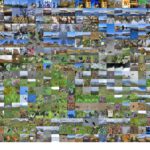 Here is the montage of all the pictures. I wonder if there are any other ways to play with the years set?
Here is the montage of all the pictures. I wonder if there are any other ways to play with the years set?
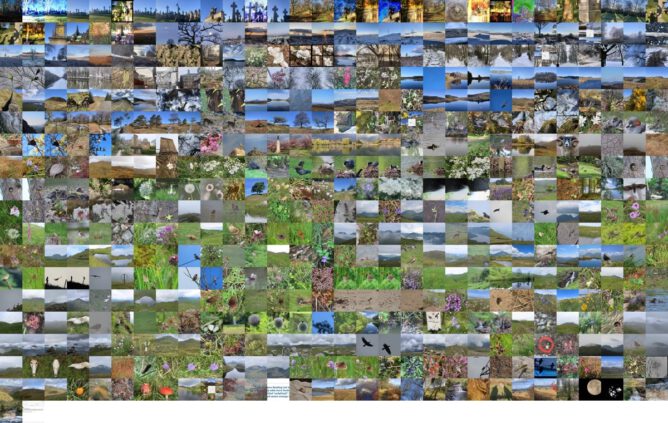
Since 2014 I’ve been making “movies” with my flickr photos for the year. I make them with a script which downloads the years photos puts them together into a movie and, use to, add music. The Music bit is broken (https) so I downloaded some manually.
This year pretty much stopped in October, then I got covid in November and have not been out much since.
I also average the photos ( below) and montage them for the featured image. This year I made a version of the script to download wee square images for the montage (average & montage scripts here).
I enjoy both the process and watching my photos flickr by. I like the fact that I can easily tweek bit of the script or run the video creation again quickly to try out different speeds, music etc.
A ‘video’ of the flickr photos I’ve posted over the summer holidays. generated mostly with this script.
My Year in Flickrs
All the photos I’ve posted to flickr this year, stitched together. I’ve updated the script a bit from this one, need to get the gist up to date too after some tidying.
Music: Myst on the Moor by Kevin MacLeod
Link:
License: Standard license
All the photos I’ve uploaded this year,
Music from https://filmmusic.io
“Inspired” by Kevin MacLeod (https://incompetech.com)
License: CC BY (http://creativecommons.org/licenses/by/4.0/)
script to download pile of flickr images and make a movie like the old pummelvision service
Creation notes: 2018 flickrs by, the script. I think I prefer this faster version.
I liked the Pummelvision service so when it went I sort of
made my own. Which lead to this:
Flickr 2014 and DIY pummelvision and 2016 Flickring by.
I went a little early this year:
I’ve updated the script (gist) to handle a couple of new problems.
I have great fun with this every time I try it, I quite like the results but the tinkering with the script is the fun bit. I sure it could be made a lot more elegant but it works for me.
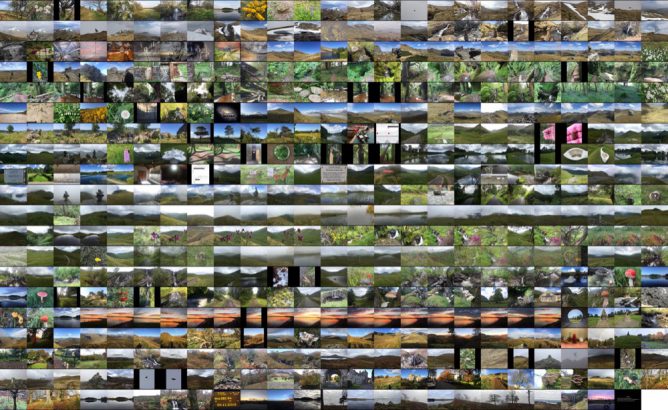
A couple of years ago I made a video of all my flickr videos in the style of the now dead pummelvision service.
I dug out the script tidied it up a little, and made the above video with my 2016 photos.
I uploaded the script in the unlikely event that someone else would want to do something like this. It is not a thing of beauty, I am well out of my depth and just type and test. The script need ffmpeg on your computer (I’d guess mac only as it used sips to resize images) and a Flickr API key.
The script also leave you with up to 500 images in a folder. Before I deleted them I made a montage and averaged them using imageMagick
montage -mode concatenate -tile 25x *.jpg out.jpg which is the featured image on this post.
and
convert *.jpg -average aver.jpeg
I guess all that the average proves is that most of my photos are landscapes, given the hit of a sky…
A few years back I used pummelvision to make a video of all of my flickr photos. Pummelvision was an online service where you pointed it to your flickr stream and it built a video for you and posted to vimeo. It could also take input from tumblr and facebook.
I though it might be interesting to make a similar video for my photos this year. However going to look for pummelvision drew a blank, the company had closed. I then though It might be interesting to try to create a similar video. From my memory and looking at my old video, pummelvision made a video with no transitions and very fast. As far as I remember it just used one tune. I downloaded my old video from vimeo and extracted the audio file using QuickTime pro. I took a guess that the frame rate was about 6 photos per second.
I guess there a few ways to grab all your photos from flickr, but this is how I did it. If I was doing it frequently I’d look into automating it, but this was a once off, or once a year if I do it again.
Flickr’s api would allow you to do this, but it seemed a bit excessive to try and write a pile of code. The Flickr API has a section to test all of the command so I headed to: Flickr Api Explorer – flickr.photos.search. There I put my own user ID in, set the min_date_taken and max_date_taken, increased the per_page to 500 and added the large photo url to the extras field.
This produced an xml file will all the information:
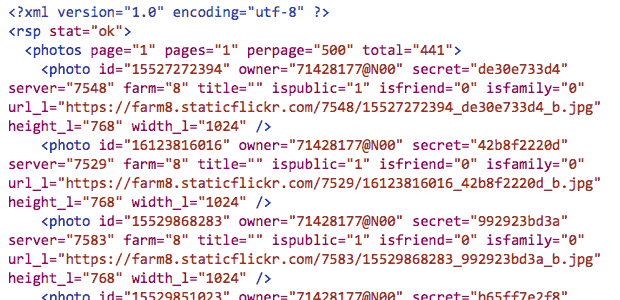
I then extracted the 397 urls from the text. There will be many ways to do this, but I am experimenting with the Sublime Text application at the moment, it found & selected all of the https: occurrences and the with cmd-shift-right arrow expanded the selection to the quotes. One copy got all of the files!
Once I had a list of urls I edit those so that each line was:
curl "https://farm4.staticflickr.com/3897/14598292323_ae6462fa07_b.jpg" > image_183.jpg
With the numbers out the image sequential and padded to 3 characters, eg image_001.jpg, image 002.jpg etc. I also numbered then in reverse so the oldest photo would be first.
I saved this text as a file, dl.sh and moved into the terminal:
cd path/to/thefolder
chmod +x dl.sh
./dl.shThis code set the dl.sh file to executable and then ran it, the terminal filled with text and the folder with images. Curl is the command-line tool for downloading files.
Downloading the large size gave a folder full of images but some where landscape and some portrait, ie 1024 × 768 or 768 x1024 I need the images to all be the same size. So i used the sips utility to first resize them, sips --resampleHeight 768 *.jpg, then to pad the portrait ones: sips --padToHeightWidth 786 1024 *.jpg
Which gives me pictures like this for the portrait ones:
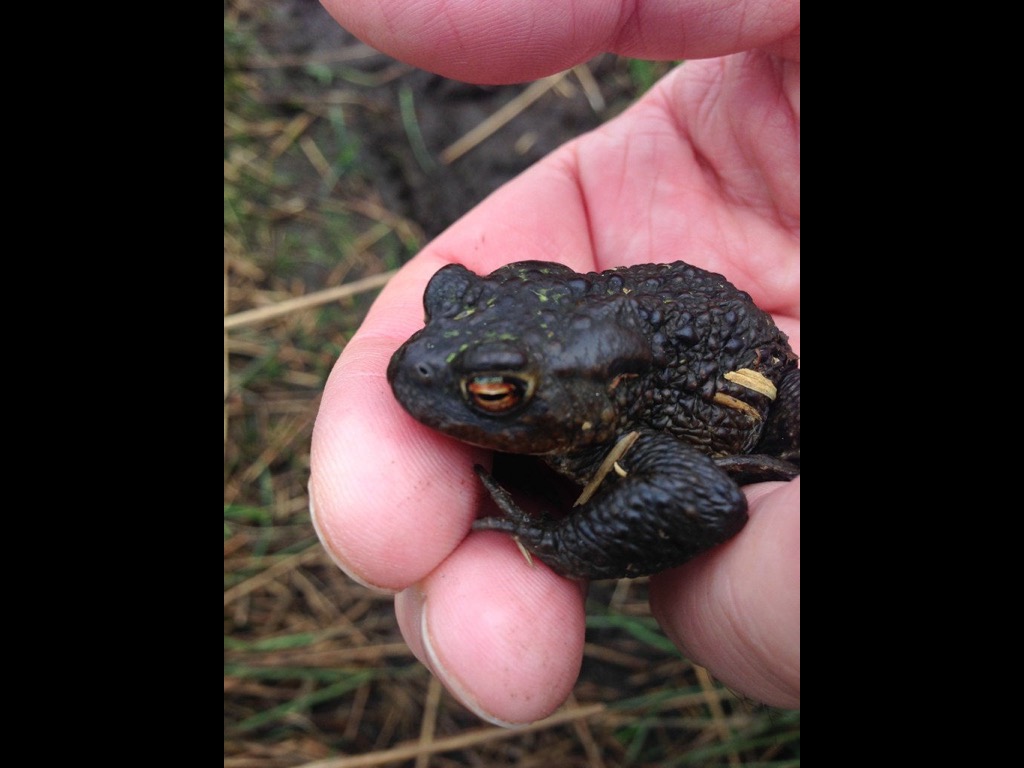
I discounted using iMove, moviemaker or the like as I wanted something quick (not necessary quick this time…) and that could be automated. I am also not sure in iMovie can show as fast as 6 per second. (Update, a quick look shows iMove can set speed to fractions of a second per frame.)
I though of a couple of ways to make the move, using Quicktime pro or ffmpeg. Quicktime pro proved the easiest option, opened the app and File -> Open Image sequence…, choose 6 frames per second, then all I had to do was save the movie.
Unfortunately Quicktime pro has been replace by Quicktime and it is a bit of a bother to get your old QT pro working if you had paid for a license. So I though I’d figure out ffmpeg too.
FFmpeg is A complete, cross-platform solution to record, convert and stream audio and video. It is a command line application and has a lot of variables. I can usually find out the right command with a bit of google. This one took quite a lot of google and failures. Most of these failures came from me trying to set a framerate, which lead to skipped frames. Eventually I dropped the idea of using the framerate options and got a very (too) fast video with this:
ffmpeg -f image2 -i IMG_%03d.jpg -c:v libx264 -pix_fmt yuv420p out.mp4
Note to self, in the -i, iput option IMG_%03d.jpg means all the images with 3 numerals, eg 001, 002… 375
I then slowed it down a little with this:
ffmpeg -i out.mp4 -filter:v "setpts=4.0*PTS" 2014-flickr-show.mp4
And added the audio:
ffmpeg -i 2014-flickr-show.mp4 -i pum.mp3 -map 0 -map 1 -codec copy -codec:a aac -strict experimental -b:a 192k -shortest 2014-flickr-show-audio.mp4
It took a fair bit of google to get the audio right too, the -codec:a option seems to sort things out.
As noted above, I could have done most of this with iMovie. But by using ffmpeg or QT pro, I’ve the opportunity to play, learn and possibly end up with an automated system. It would seem well within the realms of possibility to have a script that used the flickr api to download a bunch of images, perhaps for a year or with a tag and make a movie from them.
I’ve now figured out how to do most of this by piecing together the above fragments and finding out a bit about loops and renaming files, but I’ve no idea of how to create a bash script that will replace my hard coded tags, usernames ect with input, more to learn.